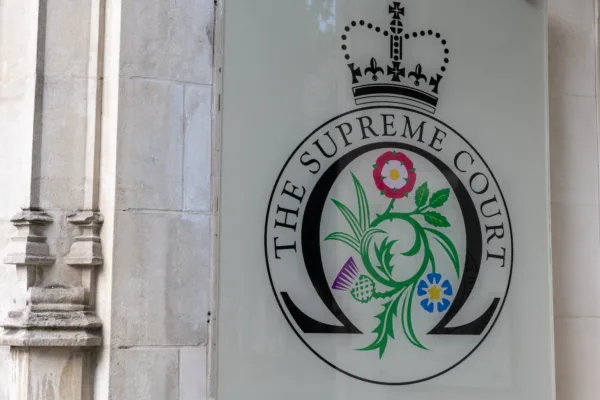Bilta (UK) Ltd (in liquidation) and others (Respondents) v Tradition Financial Services Ltd (Appellant); Nathanael Eurl Ltd (in liquidation) and another (Appellants) v Tradition Financial Services Ltd (Respondent)

[2025] UKSC 18
On appeal from: [2023] EWCA Civ 112
The Supreme Court handed down judgment yesterday on two points of corporate insolvency law in the long-running saga of Bilta (UK) Ltd & Ors, a web of claims arising out of a 2009 VAT carousel fraud.
The two questions on appeal might have already been thought to be settled law by many insolvency practitioners, given the frequency with which both key statutory provisions are relied upon and the relative clarity of their wording, but given the lack of authority determining the meaning of the first or squarely addressing the second, the Supreme Court has taken the opportunity to put both beyond doubt.
Background to the Supreme Court appeal
This fraud (“missing trader intra-community” or “MTIC” fraud) entails companies importing goods into the UK from another EU country (on which VAT is not payable), selling them with VAT in the UK, incurring enormous VAT liabilities and then simply being made insolvent. This MTIC fraud was based on the trading of EU carbon credits under the EU Emissions Trading Scheme, which at the time attracted VAT.
The claimants are five companies (Nathanael Eurl Ltd (“Nathanael”), Inline Trading Ltd (“Inline”), Bilta (UK) Ltd (“Bilta”), Weston Trading UK Ltd (“Weston”) and Vehement Solutions Ltd (“Vehement”), which engaged in this carbon credit trading and are now in liquidation, along with their respective Joint Liquidators (together the “Claimants”). Tradition Financial Services Ltd (“TFS”) brokered the trades that constituted the MTIC fraud, the Claimants claimed while knowing or suspecting the trades were fraudulent.
The claims included allegations against TFS of dishonest assistance in breaches of fiduciary duty by the Claimants’ former directors and claims by their Joint Liquidators for relief under s.213 of the Insolvency Act 1986, on the basis that TFS participated in the fraudulent trading of the Claimant companies. Following a confidential partial settlement of the claims, two issues fell to be determined by the High Court on the basis of assumed facts including that TFS as a broker which introduced counterparties and negotiated the terms/prices on which the EU carbon credits were bought and sold knew that that the trades it facilitated were suspicious, that Inline and Nathanael in particular were not legitimate, and that these and similar counterparties were likely fronts.
Following the fraudulent trading and having been abandoned by their directors, Nathanael and Inline were struck off and dissolved on 1 February 2011 and 7 December 2010 respectively, then restored to the register 19 March 2012 and 8 June 2015 respectively. Liquidators for Nathanel were appointed on 19 August 2013, and for Inline on 8 June 2015. Both companies’ liquidators issued their claims on 8 November 2017.
The High Court held that both the dishonest assistance and s.213 claims brought in respect of Bilta, Weston and Vehement were time-barred; these claims failed in their entirety and no appeal was pursued. The dishonest assistance claims by Nathanael and Inline were also held to be time-barred, however, the High Court held that TFS could in principle fall within s.213 of the Insolvency Act 1986, so that claims brought by the liquidators of Nathanael and Inline (which were not time-barred) succeeded. TFS appealed, submitting it was not within the scope of s.213. The Claimants cross-appealed the High Court’s decision that the dishonest assistance claims by Nathanael and Inline were time-barred. The Court of Appeal dismissed the two appeals.
Before the Supreme Court the same two points were in issue:
- whether the dishonest assistance claims were time-barred; and
- whether TFS was caught within the scope of Section 213 of the Insolvency Act 1986 as being “persons who were knowingly parties to the carrying on of the business in the manner above-mentioned” (i.e. with intent to defraud creditors or any fraudulent purpose).
The Judgment
Issue 1:
TFS argued that the phrase in s.213(2) of the IA 1986 (“any persons who were knowingly parties to the carrying on of the business in the manner above-mentioned”) is restricted only to persons exercising management or control over the company in question. Both the High Court and Court of Appeal rejected this construction of the statute, and the Supreme Court confirmed those judgments.
The Supreme Court set out the well-known principles of statutory interpretation and held that there was simply nothing in the wording of s. 213 restricting it to directors or managers of a company’s business. The Court was careful to note that the party in question must be carrying out activity which is caught by the statute’s wording, i.e. being “a party to the carrying on by the company of a fraudulent business” and having an active involvement in the same – mere failure to advise will not meet the test [25], but the identity of the party itself is not prescribed.
The position is summarised at [26] and endorses the clear statement of the same principle by Neuberger J in Re Bank of Credit and Commerce International SA [2002] BCC 407:
“Subject to those limitations, there is nothing in the language of section 213(2) which restricts the scope of the provision to directors and other “insiders” who were directing or managing the business of the company. The natural meaning of the statutory words – “any persons who were knowingly parties to the carrying on of the business” of the company for any fraudulent purpose – is wide enough to cover not only such “insiders” but also persons who were dealing with the company if they knowingly were parties to the fraudulent business activities in which the company was engaged. Such persons could include those who transacted with the company in the knowledge that by those transactions the company was carrying on its business for a fraudulent purpose.”
Having determined that the statute’s meaning is clear on its face, the Supreme Court also rejected extensive argument that external aids to construction of the provision lead to a narrower interpretation of the provision, and canvassed considerable case law which has applied but not determined the meaning of s.213. On the facts, the Court held that there was no denying that the directors of both Claimants “were up to their eyebrows in the fraud” [68] and the Supreme Court endorsed the adage of Templeman J that “a man who warms himself with the fire of fraud cannot complain if he is singed.” [36]
The Court’s conclusion was that “Liability under section 213(2) depends upon dishonest participation and it exists to discourage such participation” – it is now beyond doubt that the ambit of the provision extends to a party outside a company carrying on such illegitimate activity who “knowingly warms himself or herself with the fire of fraud” [38].
Issue 2:
Both Claimants’ dishonest assistance claims were statute-barred at the end of July 2015, over two years before they were issued, unless the companies could use s.32 of the Limitation Act (which extends the expiry of limitation in cases of the later discovery or deliberate concealment of fraud) by showing that they did not and could not have discovered the fraud exercising reasonable diligence, before 8 November 2011.
Whether or not a claimant company could have discovered a fraud is objectively judged by the Court taking the company “as it finds it” and not by the standard of a hypothetical equivalent run by reasonably competent, honest and properly resourced officers (see OT Computers Ltd V Infineon Technologies AG [2021] EWCA Civ 501; [2021] QB 1183). Here, both Claimant companies were not, as a matter of fact, in existence for some months prior to November 2011 and had no directors or anyone capable of actually discovering a fraud. However, having been restored to the register in 2012 and 2015, they are deemed by the operation of s.1032 of the CA 2006 to have continued in existence as if they had not been struck off or dissolved during what the Court called “that critical period”, and so the question was whether time for the purposes of s.32 should have continued to run or, per the Claimants’ appeal, stopped running until their restoration.
The parties agreed (and the Supreme Court confirmed) that the burden of satisfying the conditions for the operation of s.32 rests on the party seeking to rely upon that provision, which in this case rendered the question for the Court whether either of the two Claimants could not with reasonable diligence have discovered the fraud before 8 November 2011. The Claimants argued on appeal that s.1032(1) effectively requires the Court to deem the two companies to have had no directors or other responsible fiduciary office holders while it was dissolved, but neither the Court of Appeal nor the Supreme Court accepted that the statutory provision goes so far.
The Court held that while the Claimants were deemed to have continued to exist and not been struck off (although in fact they were) in accordance with s.1032, they were not also automatically deemed by operation of the provision to have had no directors (or liquidators) during the period they were struck off. The Court’s decision was reached on two bases: first, the principle that statutory deeming provisions are presumed to go no further than necessary, and second, taking a purposive construction of s.32 as summarised in Fowler v Revenue and Customs Commissioners [2020] UKSC 22; [2020] 1 WLR 2227.
The Supreme Court confirmed that the answer to the question of whether a company is to be assumed to have had officers during a period of dissolution is not to be found in the statute but is answered “on the balance of probabilities as a question of fact (counterfactual not historical) by reference to such evidence as is adduced by the opposing parties, and paying appropriate regard to the burden of proof if evidence is lacking”. In the Supreme Court, as in the Court of Appeal, the Claimants simply failed to adduce any evidence to prove that they could not with reasonable diligence have discovered the fraud, only relying upon the historical fact that there was no one who could have done so.
As the Supreme Court noted, if every restored company pursuing a fraud claim was deemed to have had no competent officers while dissolved and therefore accepted to have been unable to discover the fraud, all restored companies would have carte blanche to rely upon the stopping of time for limitation purposes. The Court held that this result would run counter to the purpose of s.32, namely to preserve this limitation provision for “prima facie deserving claimants” and not to permit it to be exploited by claimants “which (in most cases) only got struck off and dissolved through their own default” [82].
Disclaimer
This content is provided free of charge for information purposes only. It does not constitute legal advice and should not be relied on as such. No responsibility for the accuracy and/or correctness of the information and commentary set out in the article, or for any consequences of relying on it, is assumed or accepted by any member of Chambers or by Chambers as a whole.
Contact
Please note that we do not give legal advice on individual cases which may relate to this content other than by way of formal instruction of a member of Gatehouse Chambers. However, if you have any other queries about this content please contact:


